|
By Heather Teater, See the Triumph Guest Blogger A domestic violence survivor who participated in the See the Triumph research said, “There is always a light even at the end of the darkest tunnel.” At times, people who have experienced violence and abuse may feel that this light is hard to see. However, in this blog post, I am sharing some important information to help understand survivors who are contemplating suicide, and what resources and information are available to help. A multi-country research team for the World Health Organization has found that, throughout the world, there is a relationship between the experience of violence and suicidality (Watts et al., 2011). Many men and women who are victims or survivors of intimate partner violence may feel that suicide is the only option to escape the terror and pain that comes along with having an abusive partner. However, although the pain of the abuse may feel at times to be too much to bear, there is hope for survivors, and any survivor considering suicide should seek immediate help from a mental health professional or by calling a local emergency hotline or 9-1-1. No matter what you may have been told, your life matters, and help is available. While there is little to no research regarding exactly what might drive a victim or survivor of intimate partner violence to consider or complete suicide, one could intuitively see why trying to leave this world forever might feel like the only way to end the agony of being victimized. Some men and women do not seek help from others because they believe that they deserve the violence and abuse being perpetrated against them. Nobody deserves to be victimized. There is nothing you could do that would justify the verbal, emotional, sexual, or physical abuse that may have been perpetrated against you. Those who are experiencing abuse may feel that they lack the support they need to have a life worth living. Some may have partners who isolate them from their friends and family so that they feel as though they have nowhere to turn. Others may have friends and family to whom they have tried talking about their abuse but, for whatever reason, those people have been unsupportive or unresponsive. Due to the stigma that often comes with being a victim of IPV, victims and survivors alike may struggle to share their stories with others for fear of judgment or blame. When one is left feeling alone and unsupported, sometimes it is difficult to imagine being able to handle this burden alone. However, you do not have to go through this alone. There are shelters for battered men and women designed to keep you safe as you determine your next steps. There are victim advocates who can help you through the legal process of protecting yourself from your spouse. There are support groups for those who have been victimized by people they loved and trusted. These groups are filled with men or women who will not only believe that the experiences you share are very real, but who will also understand the daily struggle that you have lived with for so long. There are people out there who will believe you and support you in whatever ways they can. For some, the consequences of trying to leave an abusive situation are terrifying, and those fears are justified. The threat of harm when attempting to leave a violent partner is very real; to deny that would be to perpetuate the ridiculous idea that victims should make the “simple” decision to leave an abusive relationship. I understand that it is not that easy. However, with the support of others it is possible to take the steps necessary to escape domestic violence. I would be lying if I said that this is a simple process with cookie-cutter steps that everyone can follow. However, I will make one blanket recommendation for everyone: The safety of you and your family should always be on the forefront of your mind. If possible, find a trained professional to help you develop a safety plan. If you are unable to seek professional help at this time, you can find a template for safety plans here: http://www.ncdsv.org/images/DV_Safety_Plan.pdf. You can also call the Domestic Violence Hotline at 1-800-799-7233. Contacting a local shelter or victim advocate can also be a helpful way for you to gain support throughout this process. There is hope for everyone suffering through intimate partner violence. Do not give up on yourself. You have had the strength to make it this far through the abuse, and you have the strength to regroup and make it to the peaceful life that you deserve. There may be other reasons that one could feel that suicide is the only option out of the hell that is intimate partner violence. If you have considered suicide as an option to escape your situation, please seek help by calling the National Suicide Prevention Lifeline at 1-800-273-8255 or using one of the resources below. Resources
References
 Heather Teater recently completed her Master's degree in Couple and Family Counseling in the Department of Counseling and Educational Development at the University of North Carolina at Greensboro. By Whitney Akers, See the Triumph Contributor
When I interviewed for a previous job, I was asked if I saw myself to be an activist or an advocate. I answered that, in my identity, I found it impossible to separate the two. Through working to facilitate empowerment or access for people whose voices may be silenced, I am an advocate. Through taking a stand, heightening my voice, and increasing my visibility, I am an activist. These lines often intersect. Due to my social location composed of intersecting marginalized identities, I feel compelled to take action through consciousness in behavior and speech, embodying the identity of an advocate and activist in my daily life. As a woman, I know that I have a role in eradicating the shame and stigma that surrounds sexual and intimate partner violence. I have a role in supporting survivors and helping to deconstruct and de-story the myths our society propagates surrounding intimate partner violence. I believe that violence against women grows from sexist oppression inherent in the inner workings of our society’s foundation. One way I advocate for the respect and safety of women, including myself, is through speaking out against sexual violence I may encounter in a typical day. Sexual violence can consist of overt acts like rape, intimate partner violence, verbal abuse, assault, or groping. It can also manifest in more covert ways or microaggressions, such as instances of sexist interaction that has been normalized as “flirting”, “boys being boys”, or “flattery”. The other day, I was standing at a taco truck, waiting to get a delicious meal, and a man walked up to me. I immediately sensed him standing very close to me and feeling much too comfortable in my personal space. He began to make small talk about how large my “book bag” was and let his eyes linger on my “book bag” and then move lower. He continued to glance at my backside while poorly attempting to carry on a conversation. I did not feel threatened, instead, I felt infuriated. I squared my body to him, being conscious to take up more space and stare him directly in the eye and told him I had nothing to say to him. As he turned to walk away, he slid behind me, grossly gazing again at my backside as he left. In that moment, I felt gross. I felt like an object. I decided not to sensor my emotions, but to use them to create visibility of this type of quiet violence. I called him out in front of everyone in line. As he was walking off, I raised my voice and told him that he needed to be sure to keep his eyes focused on my eyes and no other part of my body, as my body was not present for his viewing pleasure. He immediately cast his gaze to the ground and scurried away, but the oddest thing happened around me. I was surrounded by all men, some of them close friends, and they became very still and silent. There was an awkward energy of no one really knowing how to be in that type of charged space. I see this as another part of violence against women. We so often shroud it in silence and secrecy or write women off as “crazy” or “a bitch”, that we are stunned when sexualized violence is exposed. Through my choice to speak, making myself visible and heard, I chose to risk looking like that “crazy bitch”, but I also chose to voice not only that man, but every person in line that sexual violence in any form would not be tolerated. I believe that everyday activism against sexual violence directly fights against intimate partner violence. Deconstructing sexist interactions and illuminating everyday instances of violence against women can translate to empowerment of the self. Knowing one’s worth and being fearless in claiming it can inspire others to follow suit. Like a domino effect, each act which destroys the silence contributes to building the roar of the collective voice for antiviolence, respect, and honoring of the self and others. Through choosing to speak out when someone attempts to victimize us, through choosing to take a stance of support, empathy, and nonjudgment when a survivor shares their story, we are choosing nonviolence. We are choosing to honor ourselves, all women, all people. We are choosing to not only survive, but to thrive. After this experience, I was fired up about standing up for antiviolence. That evening, I found an incredible video of one woman who uses art as a medium of advocacy and activism. She addresses a common form of sexualized violence women encounter daily. This is another example of the power and influence of everyday advocacy and activism. You can find the video here: http://www.theatlantic.com/video/index/361036/stop-telling-women-not-to-smile/ 7/27/2014 Their Little Eyes Are Watching By Heather Teater, See the Triumph Guest Blogger Children do not have to be the direct victims of abuse to be affected by domestic violence. Witnessing intimate partner violence can have a range of effects on a child or adolescent’s emotional and behavioral health. For example, children who have witnessed domestic violence have been found to have higher rates of PTSD, depression, and aggression than their peers. Witnessing intimate partner abuse has also been linked to decreased school functioning, increased risky behavior, and higher rates of future substance abuse (Wood & Sommers, 2011). With this knowledge, some might ask parents who are in abusive relationships why they don’t “just leave” their partners to save their children. However, it is not that easy and leaving is not always an immediate option. There are many circumstances that prevent men and women from getting out of abusive relationships. Perhaps most importantly, leaving can be dangerous and planning for safety is not an easy process. People who are in violent relationships are also often cut off from the support of friends and family. Violent partners may be in control of financial resources, leaving victims with only two options: stay with the perpetrator or leave with no money to survive. The victim may be dependent on an abusive partner in other ways as well, such as for medical insurance, access to transportation, or support for a disability. Having children may also make leaving more difficult. The victim has to find room for him- or herself and the children to stay, has to find the financial means to support multiple people, and has to plan for the safety of the whole family. Leaving is not a task that can be taken lightly and nobody should ever suggest that a victim of intimate partner violence should “just leave.” If you are unable to leave the violent situation at this time but have children who are witnessing the intimate partner abuse that is occurring in your household, there are steps you can take to help prevent them from suffering with long-standing effects. First and foremost, you should sit down with your children and a professional, if possible, to construct a safety plan for when violence is occurring in the presence of your children. Do you have a neighbor who would be willing to look after your children until the violent episode is over? If not, is there a safe place in or around your house to where your children can run when you and your partner begin to argue? Do your children know how to dial 911? Do they know your address? These are a few examples of what might be included in a safety plan. It is recommended that you create a personalized safety plan with a professional, but if you are unable to meet with a professional at this time, you can find a template for a safety plan here: http://www.ncdsv.org/images/DV_Safety_Plan.pdf . Be sure to keep this safety plan in a place where it is unlikely to be found by your partner. Your children may also benefit from receiving counseling. If you do not have your own insurance or are unable to afford counseling, look for a non-profit agency in your area where you can receive services at a free or discounted rate. Counseling can help your children develop new skills to cope with the violence occurring at home, with an ultimate goal of preventing any long-term effects. Just as it is important for you to build up your support system, it will also be helpful for your children to develop a support network of healthy friendships. More importantly, your children need to know that you love and care for them. Spending time with your children will help them know that while you are hurting, they are not at fault. Please note that if you decide to leave your violent relationship, most domestic violence shelters do provide shelter for children along with their parents. There are supports out there for you and your family. You and your children to not have to be victims anymore. You can find more information at the resources below. Resources
Reference
 Heather Teater recently completed her Master's degree in Couple and Family Counseling in the Department of Counseling and Educational Development at the University of North Carolina at Greensboro. By Sara Smith, See the Triumph Guest Blogger As a society, we are growing in awareness concerning the very real issue of intimate partner violence (IPV). However, far too many people lack an understanding regarding the scope of how many people are affected by this horrible crime. When IPV is discussed, the typical image of a male perpetrator and female victim comes to mind. This is understandable, given that this is the most common dynamic that service providers see and that is portrayed in the media. However, the issue of IPV is bigger than that, with rates affecting members of the LGBTQ population at strikingly similar rates to heterosexual couples. For example, similar to the 1 in 4 heterosexual women who report having experienced IPV at some point in their lives, current statistics suggest that 1 in 4 partners in same-sex relationships report similar experiences (Wilson, 2014). Nonetheless, many myths abound regarding IPV in same-sex relationships. Consider the following myths, highlighted by the Tahoe Safe Alliance (2014) and the website Domesticviolence.org (2009):
Another truth: Although victims in same-sex relationships face a plethora of similar dynamics in their intimate relationships as heterosexual couples, unique challenges often exist. All abusive relationships are characterized by power and control dynamics, and abusive same-sex relationships follow this pattern, too. With that being said, there are some additional unique issues that may occur in these relationships. According to Wilson (2014), perpetrators in same-sex relationships may use the threat of “outing” their partner to employers, family, and peers, if the victim should leave, which could become one of the reasons a victim might stay in an unhealthy relationship. Similarly, victims in abusive same-sex relationships may have to “out” themselves when they are seeking help from law enforcement or social service agencies. Another unique challenge for people in same-sex relationships may stem from feelings of solidarity with the LGBTQ community. Victims may fear that coming forward with a violent or unhealthy relationship could perpetuate negative stereotypes of the community. Parenting issues may also present unique barriers to leaving an abusive same-sex relationship. In some states, same-sex partners may not be able to adopt each other’s children (Wilson, 2014). Adoption laws often do not include same-sex relationships; therefore, the common threat of losing the children means something slightly different in the LGBTQ relationship. My hope is that society will become fully equipped to respond to IPV with enough resources to meet the needs of people in all types of relationships. However, too often, there are not enough resources at the community and state level to support victims of same-sex IPV. Many people facing same-sex IPV are left to wonder: Where can I turn for help? There is hope out there! There is growing recognition of the need for resources for same-sex couples and members of the LGBTQ community. Increasingly, agencies are realizing the lack of resources for this particular population and are responding by evolving their organizations to accommodate greater diversity than ever before. When you or a loved one needs support, and are having trouble finding resources, here are a few great references you can use:
Each of these resources has staff who are trained to handle crisis situations, are friendly and concerned about the safety of the caller, and will work with you for as long as it takes to get you the resources and support your specific situation calls for. They are there waiting to help you—all it takes is a phone call to get started! References:
 Sara Smith is currently pursuing a Master’s of Science in Clinical Mental Health and Couple and Family Counseling. She hopes to work with couples and continue advocating for and working with the LGBTQ community as she explores her profession. 7/25/2014 Advocating to End Human TraffickingBy Karen Bean, See the Triumph Contributor
According to the Polaris Project (http://www.polarisproject.org/) North Carolina is 10th in the nation in Human Trafficking. This is based on the number of calls received by the National Human Trafficking Hotline (1-888-373-7888). Arguably, this is only one measure but, as human trafficking is largely an invisible problem which is not tracked extensively, the issue could be much larger and determining which state has the largest volume of trafficking is irrelevant. The personal stories of trafficking survivors that live in the Charlotte area, where I live, are testament to the horrific and heartbreaking reality of human trafficking. Their willingness to share their experiences and to advocate for change are truly inspiring. I am co-chair for a group that is trying to understand how widespread human sex trafficking is in the Charlotte-Mecklenburg area and what we can do to eradicate the problem. Our group is passionate about gathering information and advocating for a solution. We have talked with police departments, judges, district attorneys, and shelter administrators in addition to reading and attending workshops to increase our knowledge. However, our process has had its ups and downs. Human trafficking is such a huge issue nationally and globally. How can we possibly make a difference? We seem to be running in place and I fear that our group is feeling disheartened. In spite of this, I remain hopeful. North Carolina has passed legislation in the past few years that has established a fairly strong legal framework for handling traffickers. Our study group has decided to narrow our focus to actions that could have tangible results locally. One example is advocating for education and awareness of human trafficking for children and their parents. The typical age of girls lured into trafficking is 13, and often the first connection with a trafficker is though the Internet. Informing young children of how trafficking occurs and what to do if they or their friends are faced with a trafficking situation is a small but important step. Then we’ll go from there. Advocacy reminds me of an a cappella choir. Even without instruments the voices make a beautiful sound. And with each added voice the sound becomes more powerful and even more beautiful. Add your voice on issues that matter to you. Collectively, we can make a difference! By Sara Forcella, See the Triumph Contributor
Being an advocate can hold so many different meanings to different individuals. It can be easy to get caught up in trying to have one definition of what it means to be an intimate partner violence advocate , but the truth of the matter is that there is no one definition of an IPV advocate. One advocate's work may look completely different than another but, this does not mean that one is correct and one is incorrect. Or even that one’s work is good and the other’s isn’t . The most important piece of advocacy work, is that you are doing something; that you are speaking up, supporting a cause, or donating your time to help others. As we’ve discussed previously at See The Triumph, IPV affects everybody; therefore, anybody can become an advocate. Here are a few tips that can help you better become an effective advocate. Hone in on your area of passion: One of the most important things about being an advocate is being passionate about your cause. You have to truly believe in what you are working towards! Before you decide to become an advocate ask yourself what am I passionate about-- do I want to work with victims of partner abuse? Do I want to work towards changing policies regarding IPV in the work place? Remember,donating a ton of money to help support a cause is not always as effective as using your passion and voice to rally behind a cause and create change. Also, being passionate about a cause does not always mean that it has to have affected you directly. In this case, you don’t have to have been in an abusive relationship to be a great advocate; you just need to have compassion, do some research and attempt to understand what IPV is and how it affects others. Survivors and service providers of IPV need these kinds of allies! The more folks that rally around a cause, the more likely that their voices will be heard. Educate yourself about the cause: While having passion is key to being a successful advocate, it’s also important to be educated about your cause. For instance, it’s critical for IPV advocates to understand what IPV is, it’s dynamics, and how it affects both victims and other members of our communities. Education does not have to be formal, it can be simply doing research of your own. You can also get a better understanding of the ‘Power and Control Wheel’ or develop an understanding of where local shelters are located and how folks can access them. Reach out to the resources offered in your community. Many times women’s shelters offer different kinds of trainings for those wanting to learn more about IPV advocacy.There are also webinars that offer trainings from the comfort of your own home (many of these are free). One of the best ways to learn about IPV is to listen to those who have been affected by it. Some organizations offer spaces where community members and victims can share their stories .Remember, while education does not have to be formal, you do need to understand what and who you’re advocating for! Volunteer your time: Local shelters and domestic violence organizations are almost always looking for unpaid help. Typically there are many different roles that advocates can take in these types of positions--sometimes you may find yourself working directly with victims in positions such as working at a safe home or working the crisis hotline, other times you may simply be helping out with things that need to be done around the shelter or organization. Don’t worry, you won’t be thrown into any kinds of these positions, it’s normal for most organizations to provide training for all of their volunteers. If working at a shelter is not something that sounds applicable to your lifestyle then look into other ways you can help. Donate food to local shelters, start a clothing drive or contact your local shelter and ask what they are most in need of. Any time that you give out of your busy schedule is better than nothing. Band together with other advocates: One voice can certainly make change occur , but imagine the amount of change that a hundred voices could ignite. The really great thing about advocacy is that you are never alone. Research what other groups in your community are doing, and see if you can join their work. Most groups are always looking for more folks to join their cause. Speak Up and Out: Sharing your knowledge with others is a critical aspect of advocacy work. You’ve taken the time to do research, you’ve spoken with others, now it’s time to get that information out to the public and make change happen. Create an advocacy blog, put a purple ribbon bumper sticker on your car , write a letter to your local congressperson regarding issues you have with our local DV laws or policies ,or attend a rally. Just get the word out! If somebody says something that you don’t agree with about IPV, tell them what they are saying is false and that it is perpetuating the stigma. As an advocate it is our duty to stop the myths and end the stigma related to IPV. Share your message with your family; educate others about the cause--maybe they will even decide to take action too! As mentioned before, it’s important to know the basic facts and how you will answer questions if they are asked. Don’t be afraid to tell somebody the truth if you don’t know the answer to a question--it’s better to say that then to provide the wrong information. Be Patient: In this day and age, we tend to expect immediate gratification; if we put in the hard work we want to see it pay off right away. However,many times this is not the way that advocacy work works. It takes a lot of work in order to change the way that a society views someting. And it takes even longer to change the myths and stigmas .Remember, just because you don’t see a change right away, it doesn't mean that it isn’t happening. Don’t give up and don’t get discouraged! |
Archives
July 2024
CategoriesAll About Intimate Partner Violence About Intimate Partner Violence Advocacy Ambassadors Children Churches College Campuses Cultural Issues Domestic Violence Awareness Month Financial Recovery How To Help A Friend Human Rights Human-rights Immigrants International Media Overcoming Past Abuse Overcoming-past-abuse Parenting Prevention Resources For Survivors Safe Relationships Following Abuse Schools Selfcare Self-care Sexual Assault Sexuality Social Justice Social-justice Stigma Supporting Survivors Survivor Quotes Survivor-quotes Survivor Stories Teen Dating Violence Trafficking Transformative-approaches |
Search by typing & pressing enter


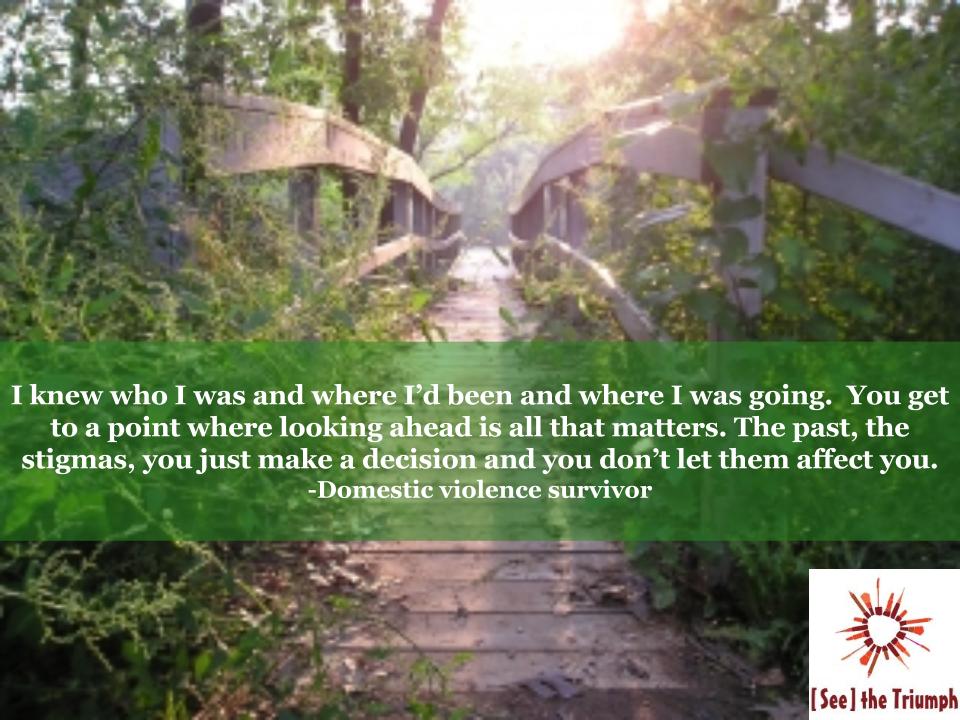
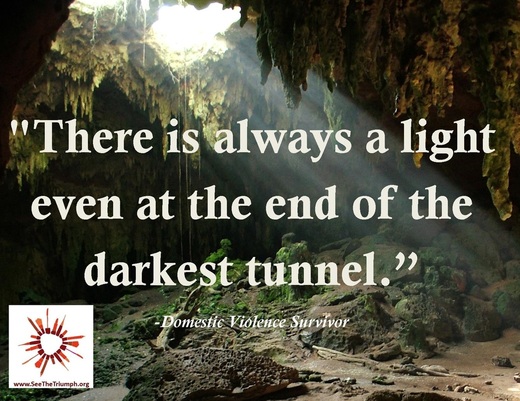
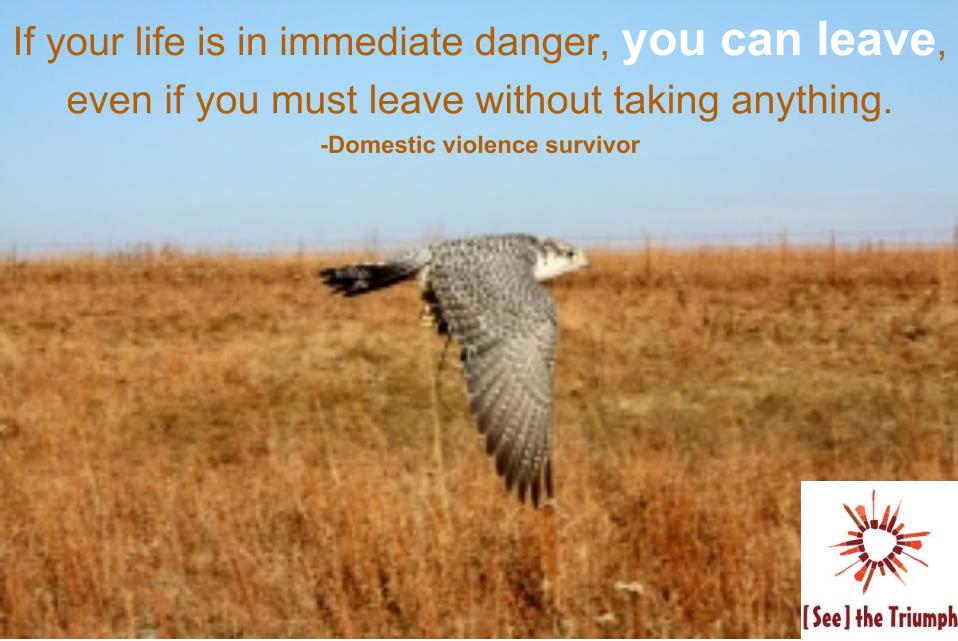
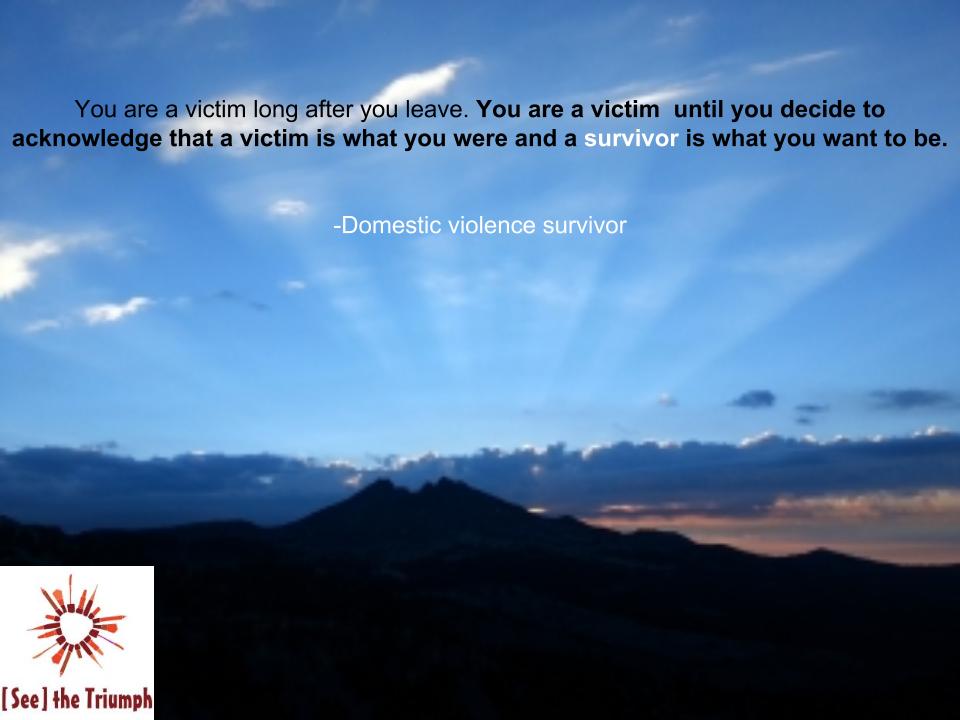
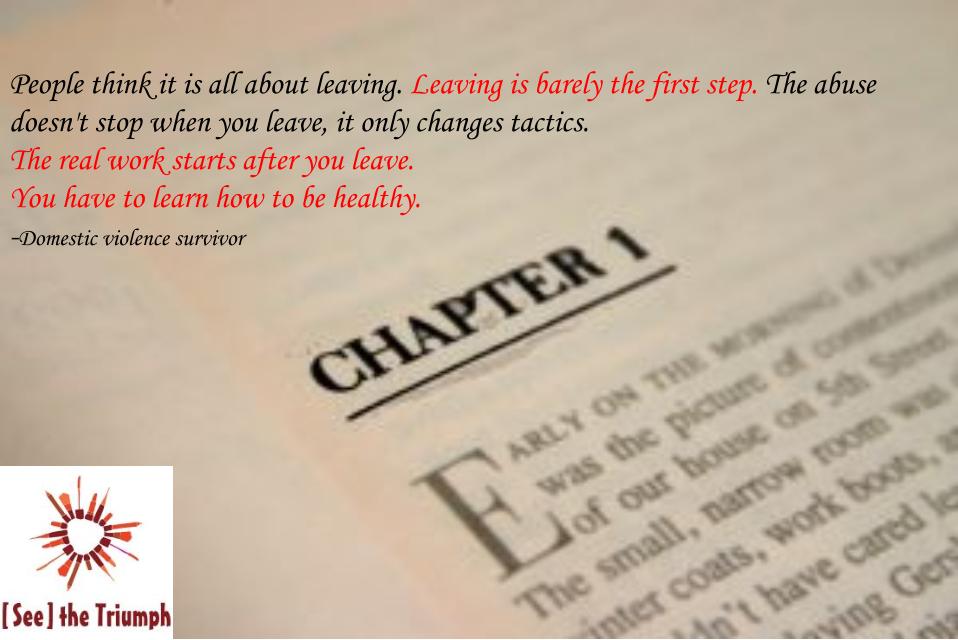
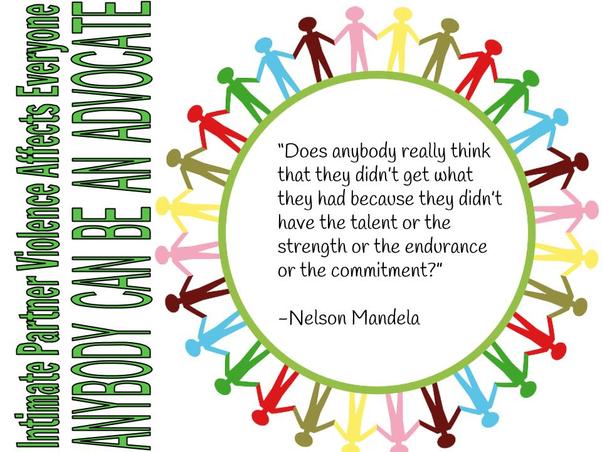
 RSS Feed
RSS Feed